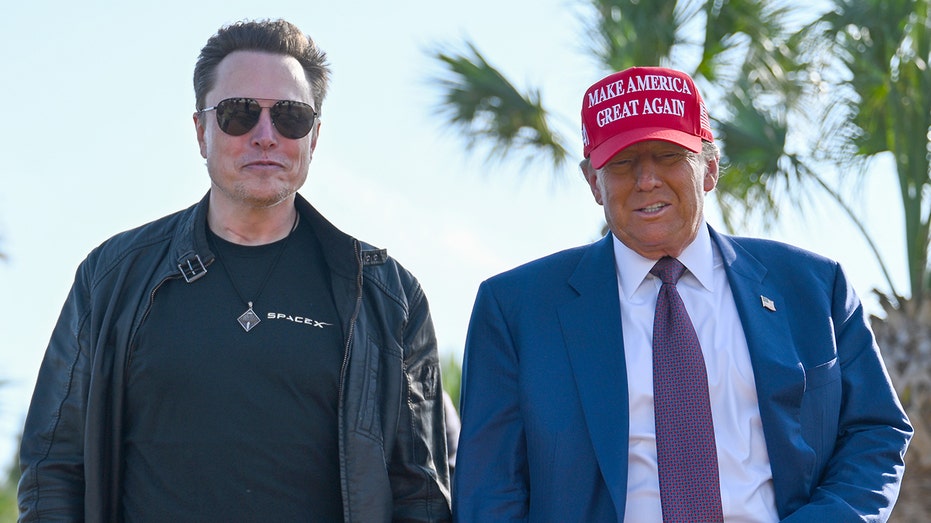Tariffs Are Just The Start: The Macro Trends That Could Disrupt Your Business

Person on rolling grass hills with a clear crack showing. By Michelle Loret de Mola using Midjourney The current administration’s tariffs have gone over like a lead balloon — they don’t really work and are driving our economy into the ground. The scale of that damage is becoming clearer every day. In January, the US economy was forecast to grow a robust 4% this year. Now, the Atlanta Fed estimates that the U.S. economy actually shrank 2.8% in the first quarter. It’s rare to witness this kind of self-inflicted economic wounding anywhere outside of a banana republic. But while the policy is wrongheaded, its desired outcome does make a bit of sense. It’s a worthy goal to bring manufacturing home after decades of offshoring to distant lands. For years, both Republicans and Democrats labored under the misguided notion that we’d let go of our industrial economy and swap in an information economy. This makes no sense. America used to be an agricultural economy. We didn’t industrialize by swapping out our food production. Instead, we added a layer. We became an agricultural and an industrial economy. Over the last forty years, we should have been laboring to build an economy that was agricultural and industrial and informational. You don’t build a tall cake by swapping out layers. Each layer transforms the one before it. Industrial production techniques transformed agriculture (in ways good and bad…). Information technology, in turn, transforms both manufacturing and agriculture. Each sector improves the others… provided you don’t trade them away. To be sure, the rise of automation and AI means manufacturing won’t create as many jobs as it used to. But manufacturing plays an important role in driving innovation and building resilience. When I was a Design major in college, we had to spend a lot of time working in the machine shop. The thinking was that you couldn’t design great products if you didn’t have a visceral understanding of how things got built. What’s true for a student is true for companies and nations: having silicon wafer fabs gives you a leg up in chip design. And that’s to say nothing about national security issues and supply chain concerns. Fortunately, manufacturing is coming closer to home, driven by deep economic, technological, and political shifts. The danger, though, is that business leaders will get blinded to this by the daily chaos and comedy of Washington’s tariff war. The bluster, the flip-flopping, the tariffs slapped on islands inhabited only by penguins — these are all moments. Underlying this, though, is momentum — the kind of long-term tectonic shifts that can upend companies’ entire business model if they don’t understand them. That momentum will continue, independent of what side of the bed President Trump wakes up on. And paradoxically, the opposite is happening for services… MORE FOR YOU Microsoft Confirms $1.50 Windows Security Update Hotpatch Fee Starts July 1 Microsoft Confirms Password Spraying Attack — What You Need To Know Google’s Gmail Upgrade—Why You Need To Change Your App We’re moving to a world where goods will be produced much closer to their customers, and services will be provided from farther away. Products Get Closer This administration’s policies are only the latest symptom of a global retreat into nationalism that has been clear since at least Brexit in 2016. A mix of economic dislocation, rising inequality, migration, and social media echo chambers is giving rise to more leaders who want to build walls around their countries rather than break them down. Geopolitical tensions are also pushing countries to become less dependent on distant supply chains. When you think about it, it really doesn’t make sense that around 45% of U.S. supplies of advanced semiconductors are made on a small island 7,000 miles away that China is committed to taking over. The economic advantage of making things abroad is also diminishing as wages in developing countries rise. Wages for Chinese factory workers have more than doubled since 2010, while their American counterparts have been getting low single-digit raises each year. The playing field is still unequal, but it's getting more level. Climate change is another factor as it disrupts global logistics, raising supply-chain costs and risks. Last year, shipping through the Panama Canal dropped by a third at one point due to a severe drought that slowed canal operations. But that’s just the start. Technological innovation is making it increasingly possible to manufacture goods close to where they’re consumed. Not just in the same country, but on the same block. The future of production isn’t so much “Made in America” as “Made In House.” In their book Proximity, Robert Wolcott and Kaihan Krippendorf explore how emerging technologies are moving the production of goods closer to us in both time and space. 3D printing and the Internet of Things are among the tech advances facilitating this shift. Imagine trying on shoes at Nordstrom and asking the associate if they have a pair of sneakers in a size 9. Now, imagine her going to the backroom and printing one for you. And while she’s at it, she might as well ask you what color you like. The result will be increased customer satisfaction, market agility, near-zero inventories, and hopefully an alternative to the over-production and waste of “fast fashion.” This greater proximity is extending to the food we eat. Companies like Upside Foods have developed synthetic meat that can be made in the same city rather than shipped halfway across the world. Vertical farming start-ups may have had a rough time of it recently, but the big-picture trends are on their side — climate change, growing pressure on land resources, and coming production advances will increase indoor yields. Both the UAE and Singapore have made vertical farming a core part of their strategic visions. Right now, it may be hard to imagine your shoes being printed while you wait, your avocados grown in the back of Whole Foods, and your iPhone being recycled onsite at the Apple Store. But these trends are progressing. Services Get Further At the same time, more and more services — blissfully unaffected by tariffs — are moving farther away from us. Of course, companies have been outsourcing services for a couple decades now, starting with call centers in countries like India and the Philippines. But a combination of better tech, rising costs for services at home, and the remote-work shock of COVID are bringing a much broader range of services into play for many more companies and individuals. Take my own California-based company. We have a writing partner based in Costa Rica, an accountant in Baltimore, and tech partners in Sioux Falls -– who do just as good a job as their counterparts in Palo Alto but at a lower cost. Fast-growing wealth management startup Facet is using technology to enable its financial planners to work with 250 clients each compared to the industry average of 75. And they’re doing it far from their clients. The “Cost Disease” theory, developed in the 1960s by economist William Baumol, helps explain why services are leaving our shores, and why they will keep doing so. Baumol gave the example of a string quartet: it takes the same time to play a Beethoven symphony and at the same quality as it did when the composer was alive. Classical musicians’ productivity has remained flat over the centuries. That’s in contrast to factory workers, who now produce far more as a result of technological advances. Despite this, musicians’ wages have risen handsomely without productivity gains because they have to remain competitive with other professions. And so the costs shoot through the roof. There’s a whole class of jobs in our economy that are the equivalent of a string quartet. Teachers and nurses still can’t handle many more students or patients in a day than their Beethoven-era predecessors. But we’ve needed to increase their pay to stay competitive with professions whose productivity has increased. The difference now is that technology is allowing these services to be performed thousands of miles away, undermining the protection these roles have enjoyed for centuries. A patient can tap into telemedicine, therapy, or legal services offered by a highly qualified professional based in Bangladesh or Thailand at a fraction of the U.S. cost. Even security services are being moved further away. If you go through the newest security lines in San Francisco’s airport, you won’t see a person watching your bags being x-rayed. The video feed is transmitted to a remote monitoring facility. Prepare or Get Fracked Of course, the trends for goods production to get closer and service provision to get farther will only accelerate. And yes, that’s because of artificial intelligence. Manufacturers’ ability to bring production home will be enhanced by agentic AI systems running increasingly complex workflows that reduce labor costs and boost productivity. Meanwhile, the same technology will gobble up a growing share of service work in professions like law, teaching, and accounting. CEOs and strategy leaders need to prepare for this macro trend as if their business depends on it — because it may well do. If you are in the business of providing products, start figuring out how to make them closer to where they are used. If you’re Nike, that may mean working out how to make sneakers in or near the mall. If you’re Safeway, it may mean a strategy to grow or source more groceries and other food products from indoor farms close to your stores. If you’re in services, start figuring out how to perform them from wherever it’s best to do so. If you’re an insurance firm, you probably don’t need salespeople on the ground in every town. If you’re a hospital, your next team of radiologists could be halfway around the world. To survive, many service providers will need to find ways to become more productive and escape the Baumol Trap. You can bet that many businesses will end up getting fracked by this macro trend in the coming years. It’s smart to avoid a panicky knee-jerk reaction to the Trump tariff storm. But leaders should be feeling lots of healthy anxiety about the bigger change in climate it foretells. Follow me on LinkedIn. Check out my website. Editorial StandardsForbes Accolades


















